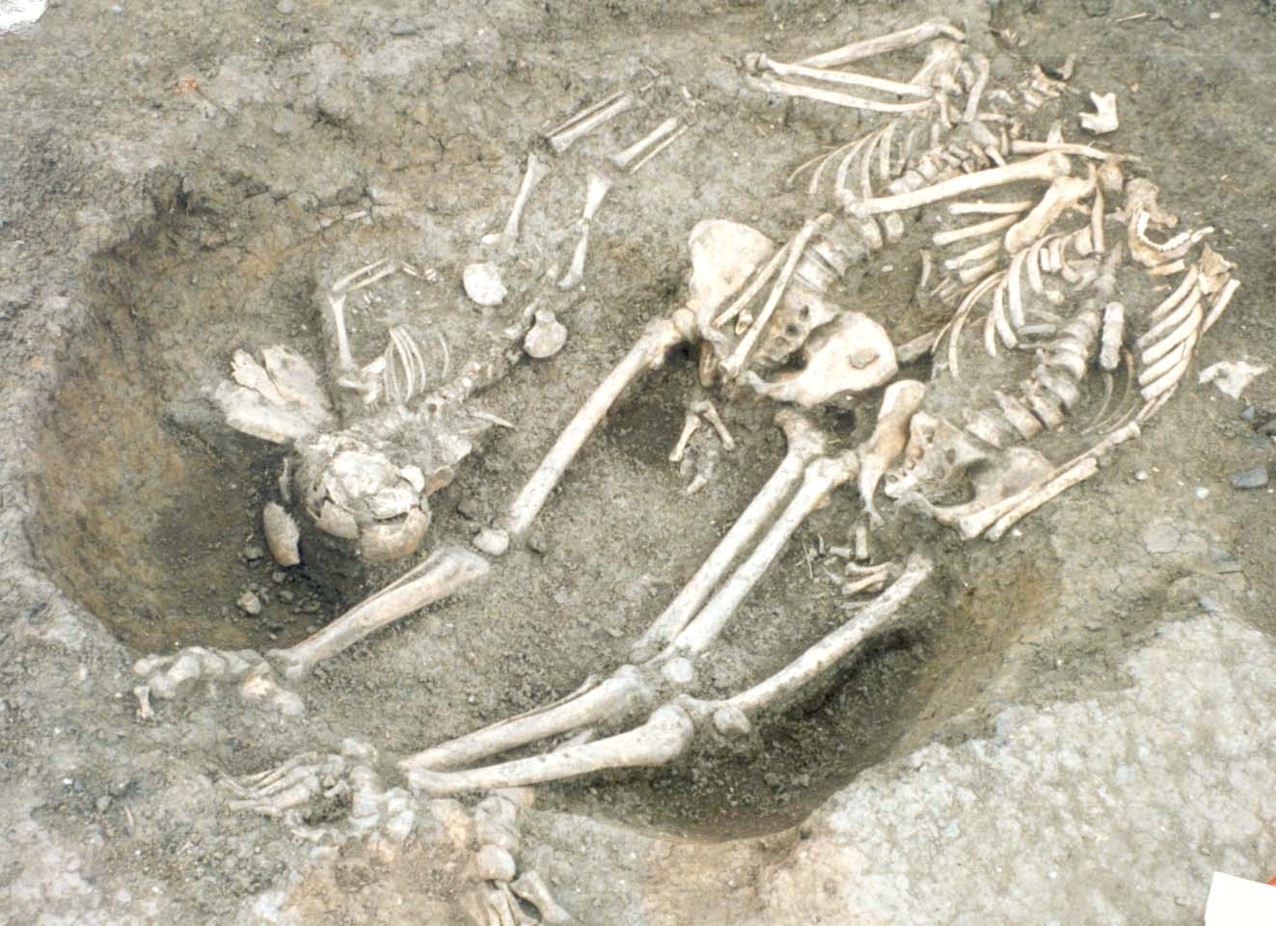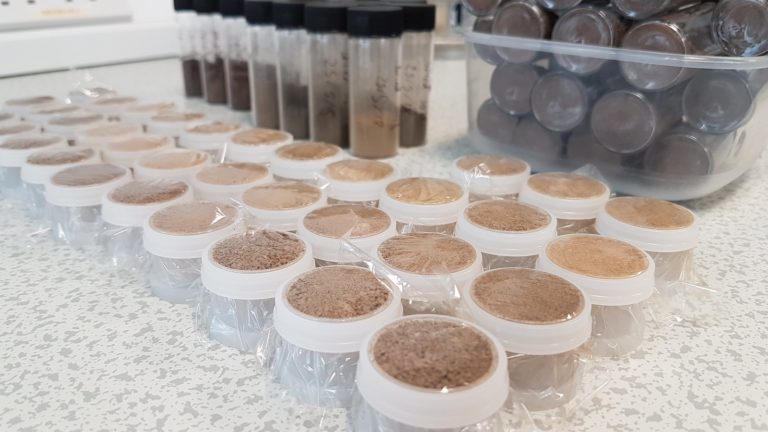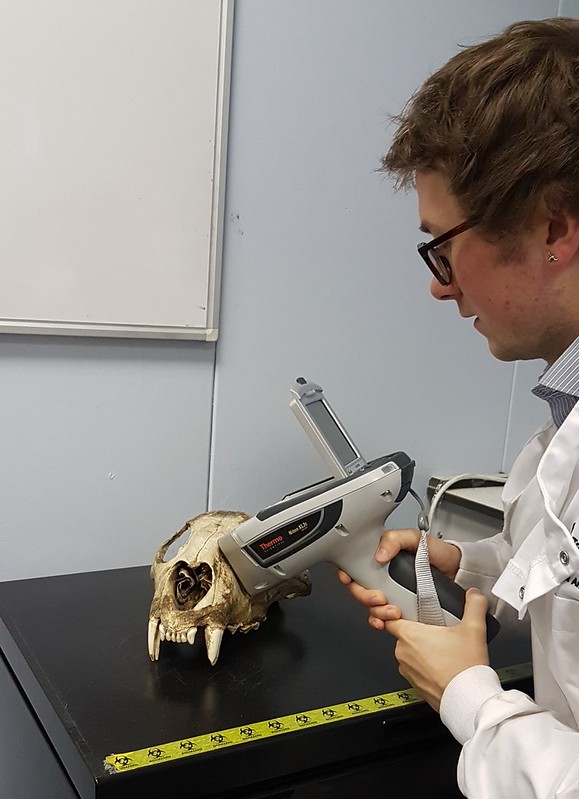Commingled Burials: What are they and what do we do with them?

Share this step
The term commingled graves refers to the burial of multiple individuals within a single context. These may be primary burials or secondary burials (i.e. buried after some decomposition at another location). It is worth noting that not all mass graves are associated with violence. During periods of rampant disease or natural disasters, mass graves may be used to dispose of the dead. For example, during the Black Death (bubonic plague) pandemic of the 14th century, mass graves were common because of the overwhelming numbers of additional deaths. In fact, a new paper has highlighted this with a rare rural Black Death mass grave in England. Approximately one-third of the population of Europe is believed to have died during this event.
Mass graves tend to be large to accommodate multiple bodies. Because of their large size, they are generally easier to find using the techniques outlined in Week 2. In addition, the presence of multiple decomposing bodies can give out a heat signature that may be detected using infrared imaging from satellites or drones. While mass graves may be easier to locate, they can be challenging to excavate and analyse.
Mass graves contain multiple bodies that may become inter-mingled and disturbed during decomposition. This can complicate excavation and analysis in the lab. This is particularly the case with graves from war contexts in which many of the combatants are of the same age and sex (i.e. young men). It is possible that the bones cannot easily be separated out into individuals.
Another example of a mass burial context that has been discussed in the news lately is rather different. These are the remains of infants found within sub-surface chambers adjacent to what used to be a mother and baby home in Tuam, Galway, Ireland. The presence of multiple infants, many of whom are likely to be a similar age, within a large container (rather than buried in the ground) creates complications in terms of excavation and analysis. During decomposition, without the infilling of soil that usually occurs as the soft tissues decompose, the small bones may collapse against those of other infants underneath and they can potentially become mixed together. As much information as possible needs to be gathered during the excavation of the site to assist with the work in the laboratory.
Primary versus Secondary Burial
Mass graves may not be the primary deposition site. The primary deposition site is the location that a body is first placed after death. It may or may not be the place in which a person was killed. In some scenarios, bodies are removed from the primary deposition site and placed in a secondary deposition site. This may be done to hinder forensic investigations. If bodies are moved from one site to another after deposition, the bodies become increasingly disarticulated. When excavating a mass grave it is clear whether it is primary or secondary in nature from the articulation of the skeletons. If all of the bones are in the correct anatomical position, it implies that it is a primary burial. If the bones are jumbled in any way or if certain bones are missing then this implies some degree of decomposition elsewhere. An example of a secondary burial that most people are familiar with is an ossuary. This is when skeletonised bodies are dug up in a churchyard to make space for more burials and selected bones from these bodies are stored within the church. Please note that bones may also be disturbed by natural processes such as water and it’s important to differentiate between these and human disturbance.
When faced with disarticulated bodies, the forensic investigators must re-associate the remains. This is done to support the calculation of the minimum number of individuals (MNI), as well as to ensure that the identification and repatriation processes are accurate and effective. The MNI is a crude measure that calculates the minimum possible number of individuals represented by the skeletal elements obtained.
It may seem like DNA would be the best approach to re-associate skeletons from jumbled bones, but it is expensive, slow and subject to contamination issues in mass grave scenarios. The most common methods of re-associating body parts and assessing the minimum numbers of individuals represented in a grave are presented below.
Non-human material
Any non-human material should be removed from the commingled context. Such material may include animal bone, personal effects and so on. Determination of non-human status is based on the shape, weight etc of the bones examined.
Spatial analysis
This method of associating body parts relies on the assumption that parts of a body will remain close to each other. Therefore minimum distances between matching body parts can suggest a relationship.
Visual pair matching
This method is based on the notion that bones from a given individual will show size, shape and colour similarities. This may be the case, but people can be quite asymmetric (e.g. have one leg shorter than the other) and the soil staining may differ across a single skeleton. It is often the long bones, such as the humerii, that are used for this approach. This method also relies on years of experience to improve the accuracy of assessments.
Osteometric sorting
This method is based on two things – 1) that the human skeleton is largely symmetrical and therefore bones from the left and right side of the body will be approximately the same size; 2) that articulating bones will be of comparable size in order to ‘fit’ together.
Demographic features
Age and sex determination can help with separating bones out by person. For example, if you have multiple hip bones, whether they are from males or females can help you refine your MNI. Given that many mass graves associated with conflicts include the remains of young males (soldiers) this technique doesn’t always provide the discrimination required (see the archaeological case study in the next section).
DNA
DNA is unique in everyone but is challenging to use in a commingled grave context due to cross-contamination. It is also expensive and destructive (see the forensic case study).
In more complex commingled contexts, it would be common to use a range of methods to re-associate body parts.
Elemental composition
 Powdered bone and soil samples to test for chemical element composition using XRF.
Powdered bone and soil samples to test for chemical element composition using XRF.
The analysis of the distinctive chemical element compositions in bones in order to separate the bones of individuals is a new approach. In particular, forensic practitioners have been interested in the potential of portable x-ray florescence – partly because it is a non-destructive method. X-ray florescence in a method that fires radiation into a sample and captures the energy released by the electrons from the atoms when excited. The energy released correlates with elemental composition. This is usually a lab-based method, but the portable variety allows application in the field.
 XRF analysis of an animal skull in order to determine the chemical element composition.
XRF analysis of an animal skull in order to determine the chemical element composition.
Small studies using archaeological or forensic cases have shown that this method is capable of distinguishing one person from another – but these studies have used very small sample sizes or uncomplicated burial contexts. Our own research in this area, which has used larger sample sizes, has shown that:
- Compact bone seems to show more consistency within an individual than spongy bone
- Long bones are more reliable for comparison than other types of bone
- Over longer timescales, diagenesis eventually ‘over-rides’ individual differences between people making the use of pXRF significantly more challenging
The presence of significant numbers of bodies buried together often suggests a tragic and disturbing event – particularly in a forensic context – be it violence or natural disaster. The journal Forensic Anthropology has made its special issue focusing on commingled remains open access for us. In it, you will find articles on methods of working with such contexts as well as case examples.
Some of you may find these sections and journal articles disturbing.
Share this

Reach your personal and professional goals
Unlock access to hundreds of expert online courses and degrees from top universities and educators to gain accredited qualifications and professional CV-building certificates.
Join over 18 million learners to launch, switch or build upon your career, all at your own pace, across a wide range of topic areas.
Register to receive updates
-
Create an account to receive our newsletter, course recommendations and promotions.
Register for free








